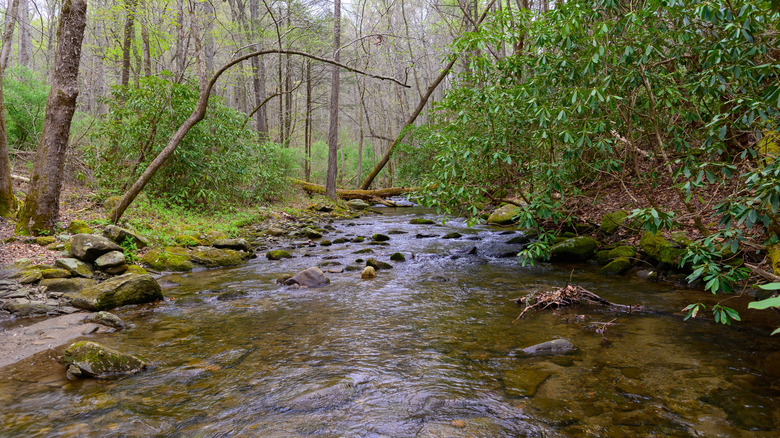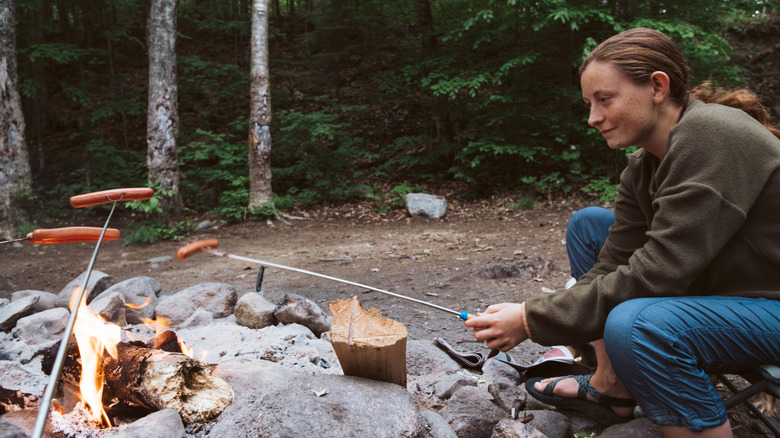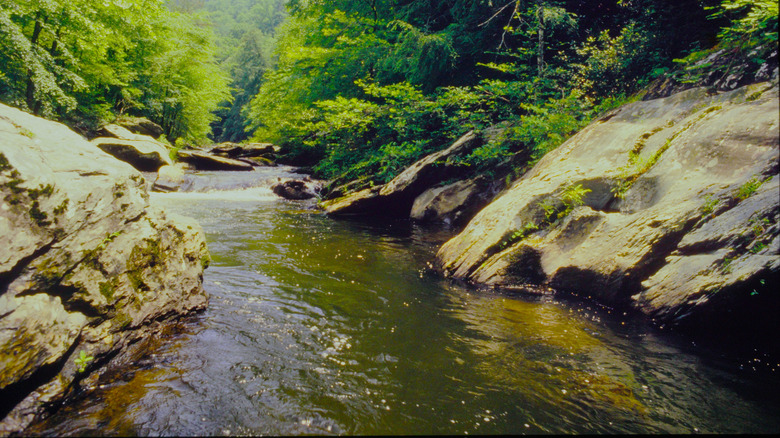Hidden In Georgia's Blue Ridge Mountains Is A Vast Wilderness Area Full Of Waterfalls, Trails, And Campsites
The Wilderness Act defines wilderness as "an area where the earth and its community of life are untrammeled by man, where man himself is a visitor who does not remain." This designation is the highest level of protection given to U.S. public lands and is reserved for places that remain wild, raw, and largely untouched. The Cohutta Wilderness, tucked into the Blue Ridge Mountains of northern Georgia and southeastern Tennessee, fits the bill.
The Cohutta Wilderness covers nearly 37,000 acres and is jointly managed by the Chattahoochee-Oconee and Cherokee National Forests. It was first designated in 1975 and expanded in 1986, making it the largest designated wilderness area east of the Mississippi River. It's also part of the greater Big Frog Wilderness complex, which includes connected wilderness lands in Tennessee; collectively, they form one of the most expansive wild corridors in the Southern Appalachians.
With more than 90 miles of maintained trails, the Cohutta is a dream for anyone craving solitude and sweat. Hike along mountainsides that rank as some of the oldest you'll find across the entire globe. Trek along shorelines of ancient seas and take in the mossy boulders and lush flora. Two wild trout rivers, the Jacks and the Conasauga, wind through the wilderness and provide over 45 miles of fishing. Local anglers prize the rivers' population of rainbow, brown, and native brook trout. Beyond the trailheads, you will find charming towns embodying the ideal Blue Ridge Mountain life, the perfect places to relax before your time in the wild.
Waterfalls, campsites, and trails in the Cohutta
The Cohutta Wilderness is known for its abundance of waterfalls, particularly along Panther Creek Falls Trail, a 7-mile round-trip hike that leads to a series of breathtaking cascades. Jack's River Falls, accessible via the 9-mile-long Beech Bottom Trail, is another popular hike to a revered fall. Bear in mind that "wilderness" not only means no facilities and remote sites accessible only on foot, but also generous opportunity for quiet moments. Visitors are treated to plenty of the latter as they hike through tunnels of native sassafras and chestnut oak. You'll also encounter the region's iconic Southern Appalachian blooms, such as flame azaleas and rhododendrons, which turn the landscape into a quilt of beautiful colors in the summer and spring. Campers and hikers are expected to follow Leave No Trace principles, including packing out everything they bring in.
Because group size, campfire rules, and trail use are all regulated during peak visitation seasons, planning ahead is necessary, so check all regulations while planning your trip. While you're here, keep an eye out for wildlife like black bears, white-tailed deer, more than 70 fish species, and nearly 100 species of birds. Venomous snakes like timber rattlers and copperheads also inhabit the underbrush, so be careful. If you're planning to explore deeper routes, like Jack's Creek Trail, be prepared for wet feet; there are nearly 40 stream crossings on that route alone. Day hikers and backpackers alike should only come if they have plenty of backcountry experience.
If you're craving more than just waterfalls and forests, consider tacking on a visit to nearby Carters Lake, aka Georgia's "miracle in the mountains." It's a clear‑water reservoir that's great for camping, fishing, and lazy afternoons. Its calm waters and developed amenities offer a nice contrast to the rugged, backcountry feel of the Cohutta.
How to get to the Cohutta Wilderness and what to know before you go
First things first: the Cohutta Wilderness is remote, and getting there is part of the adventure. Expect questionable cell signals, dirt roads for miles, and long stretches without facilities or other cars. If you're coming from out of state, fly into the Hartsfield-Jackson Atlanta International Airport (ATL). This is the busiest airport in the world, so it has ample flight options and rental car availability. From here, the main access points are from the towns of Blue Ridge and Ellijay, Georgia. Getting to the Cohutta requires driving on rough, narrow roads that are often impassable in winter or after heavy rain, so consider renting a 4-wheel drive vehicle.
There are no developed campsites in the wilderness area itself, so you'll need to backpack in and follow the region's camping regulations. Check the bulletin boards at trailheads for fire restrictions, especially during spring and fall. Bring a water filter or purifier, bear-safe food storage (canister or hang kit), and all your meals, layers, and first aid supplies. Pack extra snacks in case of emergency, and don't count on your phone as your guide since digital maps often fail deep in the forest. Carry a physical topographic map and compass, wear waterproof boots, and bring trekking poles for slippery creek crossings. As is the case for any backcountry adventure, always let someone know your itinerary before heading in.
After a rugged few days in the Cohutta Wilderness, you will likely be ready for a warm shower, a comfortable bed, and a cold beer. For these, you can just roll back into Blue Ridge, one of the most renowned mountain cities in the South, for a place to stay and that perfect post‑hike meal to refuel. In the Cohutta, it's possible to spend multiple days on the trails without bumping into another soul, so head to a brewery for some human interaction and tell the stories of the incredible experience you just had.


